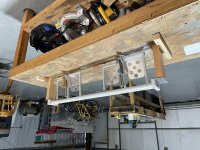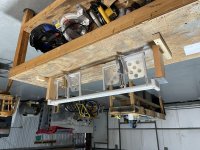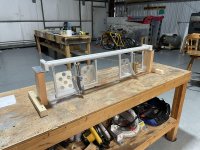I do agree, if you are going to provide training in your RV, install the dual brakes. But, that would only apply to less than 1 in a hundred RV's.
Van made them an option for that very reason.
You see people post all the time "My RV7 cost $110,000.00" Maybe you didn't need dual brakes, a quickbuild kit, Dual Dynon screens, leather upholstery, Air brushed 6 color paint, drop in panel from vender, EFI O390 with ported heads.... you get the point. If you keep adding in the things that you don't need, the cost and weight goes up. And the wife's enthusiasm goes down.....

Here is what the FAA has to say about brakes....
From AOPA
REGULATORY BRIEF -- FAA ISSUES NEW INTERPRETATION OF "DUAL CONTROLS"
REGULATORY BRIEF
FAA issues new interpretation of "dual controls"
The issue:
Recently the FAA issued yet another interpretation of "dual controls." The latest interpretation is intended to end the debate over whether or not dual brakes are required under parts 61 and 91 of the Federal Aviation Regulations (FARs) in aircraft being used for flight instruction and practical tests. Although previous interpretations reinforced that dual brakes were not required for flight instruction, it was unclear whether or not the interpretation applied to FAR Part 61 regulatory requirements for aircraft being used for flight instructor practical tests. The FAA's most recent interpretation -- contained in an amendment to the Inspector's Handbook -- ends the debate over dual brakes for both types of operations.
The importance to our members:
Most of the Mooney M20 series airplanes, many Beech Bonanza models, Beech Barons, Piper Apaches, and many other high and low performance single and twin engine airplanes are certified as "dual control" without being equipped with dual brakes. A series of recently issued FAA letters of interpretation stated that such airplanes could not be used for flight instruction because they did not meet the regulatory requirements of 14 C.F.R. � 91.109(a). Other recently issued FAA interpretations stated that aircraft without dual brakes could not be used for flight instructor practical tests because the applicant could not perform the required tasks without access to the brakes. These interpretations effectively eliminated a substantial portion of the GA fleet from being used for flight training or CFI checkrides.
Significant Provisions:
The part 91 regulation in question is � 91. 109(a) where it states (in pertinent part) "No person may operate a civil aircraft (except a manned free balloon) that is being used for flight instruction unless that aircraft has fully functioning dual controls."
The first two FAA interpretations of this regulation (one from FAA's Eastern Regional Counsel and the other from FAA Assistant Chief Counsel) interpreted the dual control requirements of � 91.109(a) to mean that brakes, either toe- and/or heel-brakes or a hand/parking brake, must be accessible from either seat.
The latest FAA interpretation (from FAA Assistant Chief Counsel) recants on the agency's original interpretation and states "It has been a long-standing AFS technical position that brakes are not required controls under section 91.109(a). The term "dual controls" under section 91.109(a) refers to flight controls (e.g. pitch, yaw, and roll controls). These flight controls are the only required dual controls for the purposes of meeting the requirements under section 91.109(a)."
Under the latest FAA Chief Counsel interpretation brakes are not included in the dual control requirements of � 91.109(a) and are not required equipment when conducting instruction in an airplane.







